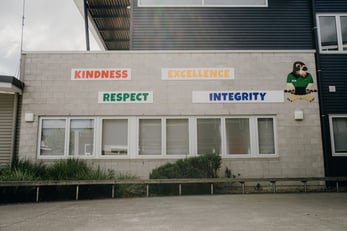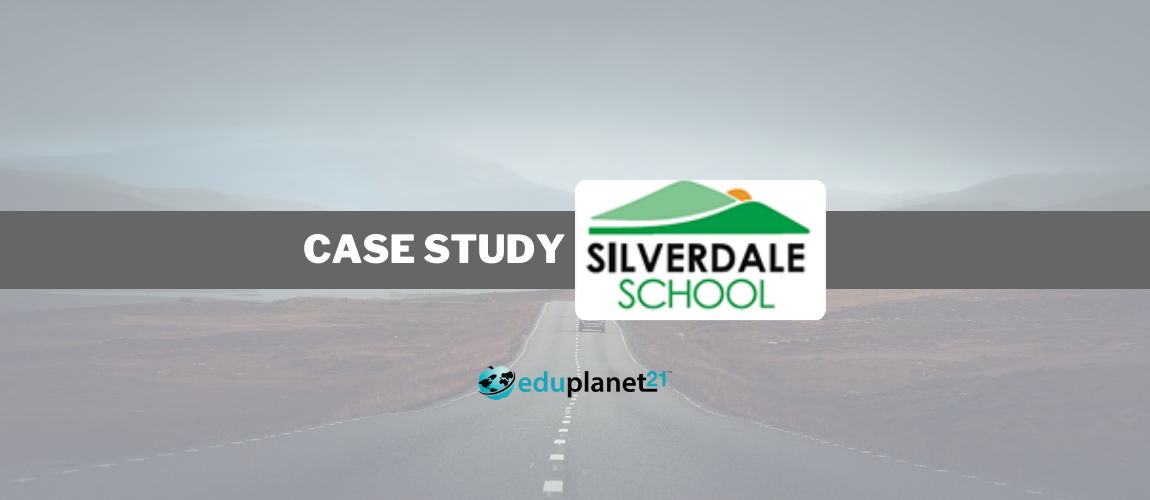Nestled right below the signature line of Lynn Scott and Laura Webster, two Deputy Administrators of the 150 year-old Silverdale School in New Zealand, is a statement written in the native New Zealand language of Māori: “Ako ki te haere, haere ki te ako” and translated to English it reads, “Learn to journey, journey to learn.” Both School Deputies proudly explain how integral this phrase has been to their approach to learning and leading. With the Māori word “ako” meaning both teacher and learner, this leadership team sees themselves as collaborative co-learners, with their peers and the students, working towards a new and innovative approach to learning outcomes.
Prior to 2018, schools in New Zealand had rigid national standards with accompanying benchmarks which many educators found to be highly prescriptive and even stifling. When a new political party came in, the national standards were abandoned, and teachers found themselves with the freedom to create new learning opportunities for students.
While there was great excitement, the Silverdale School leadership found that despite having a talented, dedicated, and passionate staff, without some structure, “everybody was doing things in different ways” with varying results. “It was a bit confusing coming in, trying to wrap our heads around long-term planning, when everything looked different from team to team. At times, planning felt shallow. Content seemed touched on and then moved on. Some units felt like they were built around the activities rather than big understandings and learning outcomes for students,” explained Lynn Scott, Deputy Principal.
Starting with the End in Mind:
The Understanding by Design (UbD) curriculum framework created by Jay McTighe and Grant Wiggins was familiar to the Silverdale School leadership and provided the perfect framework through which the staff could design a new curriculum with responsive instruction that started with intentional student outcomes. The UbD framework uses a backward design learning model, sometimes referred to as “starting with the end in mind” to articulate with specificity student learning goals and what knowledge acquisition looks like before planning the activities and lesson plans.
Contextualization is key to the curricular focus at each school within the New Zealand school system. “Which is awesome because it gives us the freedom to teach our students based on what they really need.” Deputy Principals, Mrs. Scott and Mrs. Webster explained that the intentionally broad curriculum levels allow all New Zealand schools to focus instruction on related topics that are differentiated toward the specific communities of the students they serve.
Leading Numeracy, Literacy, and Curiosity:
The three guiding areas of numeracy, literacy, and curiosity are core to Silverdale School’s approach to instruction. However, rather than look at these areas as siloed disciplines, the leadership team started with an inquiry approach that continually asked what do our students need to know? Using the UbD framework, the leadership team and staff worked backwards into a robust curriculum that centered on locally relevant big ideas and understandings.
Additionally, they focused the content and instruction towards the intersection and application of math and literacy through areas such as science and technology, embracing projects that developed student’s skills in experiments and procedural writing, and measuring and math literacy as a means of truly preparing students to authentically apply their learning to the local context.
Recipe for Success:
Repeatedly, Lynn Scott and Laura Webster spoke to the value of a strong and supportive leadership team that was willing to focus first on student outcomes, alongside the backwards design methodology of UbD, and the right technology.
“We have an amazing leadership team. All the team leaders understood the problem and we have a Principal [Cameron Lockie], a fantastic leader, open to trying new things as long as we justify our research, and provides us the freedom to fail. This fostering of growth mindset is a key factor in enabling innovation within our school.”
The use of UbD at Silverdale School began with the middle and senior teams. Once that work was underway, they initiated productive professional discussions that aimed at aligning student progressions while maintaining intentional time for play for the younger students. They also created a cohesive UbD team that included representation from every year level across the school. Grade level teams routinely and successfully discussed and collaborated on the planning for all three stages of UBD.
All this work led to productive professional discussions. Laura Webster shared, “As we got to the stage where we were upskilling ourselves about understandings and transfer goal, the value about what children should learn came from the healthy debates and discussions that aligned to the UbD structures and evidence of learning. We wanted all the teachers to have those conversations.”
The Right Technology:
Eduplanet21 platform offers a UbD specific curriculum unit planner developed in partnership with Jay McTighe. Along with the sequenced planner, Eduplanet21 hosts a series of courses delivered by Jay McTighe, called Institutes, that walk educators through the UbD process in bite-sized pieces. According to the Silverdale leadership, the UbD modules on Eduplanet21 were very helpful to make sure everyone had a common understanding.
The Deputy Principals explained how vital it was having a single place to develop and store the developing curriculum on the Eduplanet21 platform. They shared how teacher collaboration, and richer conversations about learning design increased, as well as how much easier it was to identify any holes in the evolving curriculum. By having everything hosted on Eduplanet21, teacher teams began dipping into each other’s plans and sharing, while adapting the curriculum to meet learners needs.
“When your head is down in the work, you can lose sight of what you’ve accomplished. When we work together, we can see all the ways in which we have made progress. The Eduplanet21 platform is helping us stay on track and make progress towards our goals. We have changed our culture to not be so focused on answers but asking questions and coaching each other. The whole school feels more cohesive, we’re talking the same language and concepts,” offered Laura Webster.

During uncertain times, one thing is certain, Silverdale has accomplished a lot on behalf of the students they serve and does so in words and actions. As boldly written on the outside of the building entrance, this leadership team embraces and models, for their students and themselves the values of: Kindness/Atawhai, Excellence/Hiranga, Respect/Whakaute, and Integrity/Ngākau pono.
About Eduplanet21:
At Eduplanet21, we provide the framework to streamline the curriculum design process. Our tool walks educators step-by-step through the design process of establishing learning goals, identifying assessment evidence, and developing learning plans to build student mastery.
We ensure educator success by providing personalized professional learning opportunities in creating a meaningful, engaging curriculum. To learn more about the products and services we provide, please visit our website at eduplanet21.com.
 Login
Login

